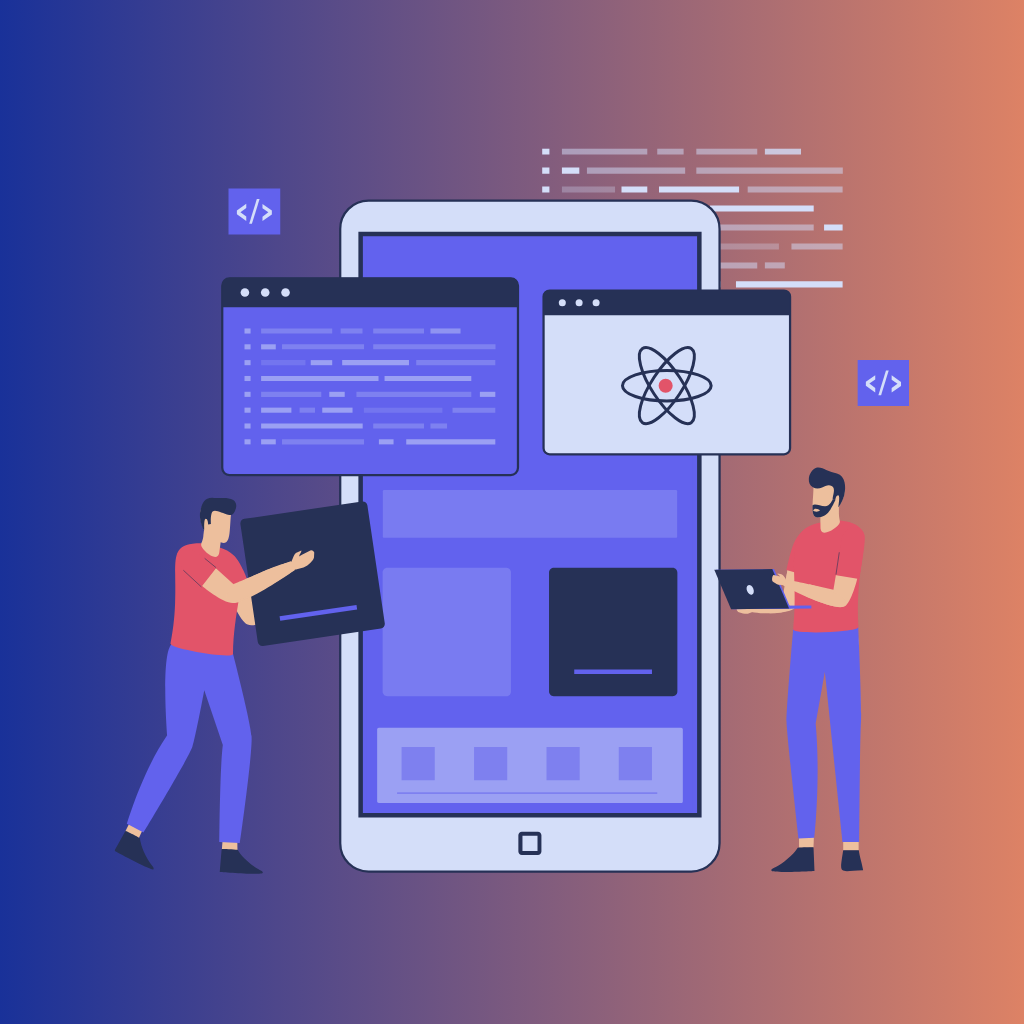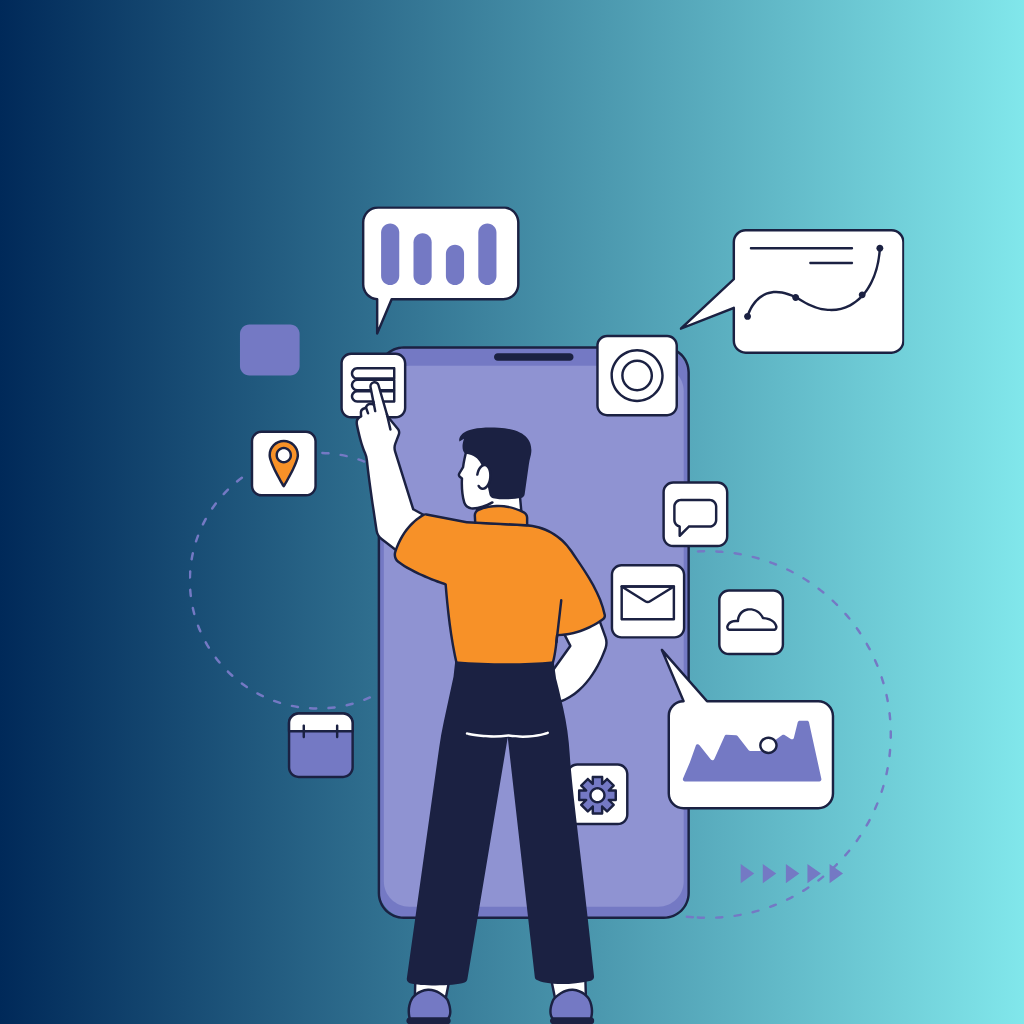In today's digital age, where apps can reach global audiences with just a click, the ability to communicate with users in their native language is not just an advantage; it's a necessity. Launching your app in multiple languages can dramatically broaden your user base, enhance user engagement, and increase the overall impact of your digital solution. However, the process of making your app multilingual extends beyond mere translation. It involves a series of technical steps that ensure your app not only speaks multiple languages but also respects the nuances of cultural differences in usage and interpretation.
In this blog post, we'll delve into the technical realm of making your app multilingual, focusing on two key processes: localization (L10n) and internationalization (I18n). These terms might sound complex, but they are fundamental to the development of an app that's accessible and user-friendly across different linguistic and cultural landscapes. By understanding and implementing these processes, developers can create apps that offer more than just a translated interface—they provide a user experience that feels native to every user, regardless of language.
While it's crucial to consider cultural and content-related aspects when launching your app in multiple languages, our focus here will be on the technical side. We'll guide you through the steps of setting up your app for internationalization, implementing localization, adjusting user interfaces, and ensuring that your app undergoes thorough testing and quality assurance. By the end of this post, you'll have a clearer understanding of the technical journey involved in launching a multilingual app and why embracing these complexities is a valuable investment in your app's international success.
I. Understanding Localization and Internationalization:
Before diving into the nuts and bolts of making your app multilingual, it's crucial to grasp the concepts of localization and internationalization. These terms are often mentioned together in the context of app development, and while they are interconnected, they serve distinct roles in the process of app globalization.
- Internationalization (I18n): At its core, internationalization is the process of designing and building your app in such a way that it can be adapted to various languages and regions without requiring significant engineering changes. Think of internationalization as the foundation for creating a global app. It's about ensuring that your app's codebase is flexible and universal enough to support different languages and cultural formats. This doesn't involve translating the app's content but rather preparing the app's structure to handle multiple languages. For instance, ensuring your app can support various character sets, like those needed for languages such as Japanese or Arabic, is a part of internationalization.
- Localization (L10n): Localization, on the other hand, is the process of actually adapting your internationalized app for a specific language or region. This goes beyond translation; it involves tailoring your app to meet the linguistic, cultural, and technical requirements of a particular market. Localization includes translating text, converting currencies, adjusting date and time formats, and even modifying content to align with local customs and norms.
Why are these processes so critical? By internationalizing your app, you make the task of localizing it for different languages much more straightforward. Imagine building a house without considering where the doors or windows might go; retrofitting them later would be a much harder task than if you had planned for them from the start. Similarly, internationalizing your app from the outset makes adding each new language just a matter of localization, not a major structural overhaul.
In essence, internationalization is about creating a versatile framework that can support a multitude of languages and regions, while localization is about filling in that framework with the specific details and nuances of a particular language or culture. Together, they ensure that your app can not only reach a global audience but also provide a localized experience that feels intuitive and native to every user.
II. Setting Up Internationalization (I18n):
Setting up internationalization (I18n) is like preparing a canvas for a painting. You're setting the stage for your app to welcome various languages and cultural nuances in the future. This step is crucial because it's much easier to integrate localization elements when your app is designed with internationalization in mind from the start. Let's delve into the key aspects of setting up internationalization for your app.
-
Structural Consideration:
The first step in internationalizing your app is to abstract all user-facing strings from the code. Instead of hardcoding text, use placeholders that can later be replaced with the actual text for each locale. This approach allows you to easily swap in text for different languages without modifying the codebase.
Ensure your app's layout is flexible enough to accommodate variations in text length, which can vary significantly between languages. For instance, a phrase in English might be much shorter than its German equivalent.
-
Unicode Support:
Unicode is a computing industry standard designed to consistently encode, represent, and handle text expressed in most of the world's writing systems. Ensure your app supports Unicode, enabling it to display characters from a vast array of languages, including those with unique character sets like Chinese or Arabic.
Implementing Unicode support means your app can correctly render and process text in any language, a fundamental aspect of internationalization.
-
Date, Time, and Number Formatting:
Different cultures have different conventions for displaying dates, times, and numbers. When internationalizing your app, abstract these elements so that they can be localized easily. For example, while the U.S. format for today's date is "March 14, 2024," in many parts of Europe, it's "14 March 2024."
Utilize libraries or built-in programming language features that support international date, time, and number formatting. This way, you can ensure that your app respects the user's regional settings and displays these elements correctly.
-
Resource Files:
Use resource files to store localized content. These files contain all the text strings used in your app, organized in a way that makes it easy to swap in different languages. Each language will have its own resource file, allowing for easy updates and additions of new languages.
-
Architectural Decisions:
Make architectural decisions with internationalization in mind. For instance, if your app includes data input, ensure it can handle various formats, like the different ways addresses, phone numbers, and names are formatted around the world.
Consider how your app handles external data sources or integrates with third-party services. Ensure these elements are also designed to support multiple languages and regions.
By thoroughly integrating internationalization into your app's development, you lay a robust foundation for the subsequent localization process. This proactive approach not only streamlines adding new languages in the future but also underscores your commitment to providing a truly global and inclusive user experience.
III. Implementing Localization (L10n):
Once your app is internationalized, the next step is implementing localization (L10n), where you adapt the app for specific languages and regions. This process involves translating text and adapting various elements to fit cultural norms. Here’s how you can effectively implement localization in your app:
-
Translation of Text:
Begin with translating the app's text content, including UI elements like buttons, labels, and menus, as well as user notifications and instructional content. Use the resource files prepared during internationalization to swap text for different languages easily.
It's crucial to engage professional translators or localization services to ensure that translations are not only linguistically accurate but also culturally relevant and contextually appropriate.
-
Localizing User Interface Elements:
Adapt your UI to accommodate the translated text. Different languages have varying text lengths, which can affect button sizes, labels, and layout spacing. For example, a short English word might be significantly longer in German, requiring adjustments to the UI to maintain usability and aesthetics.
Consider the directionality of text. Languages like Arabic and Hebrew are read right-to-left, which requires a mirrored layout to ensure a natural reading and interaction flow for users of these languages.
-
Managing Multimedia Content:
Localize images, videos, and other multimedia content that contain text or culturally specific elements. This might include adapting graphics, changing colors, or replacing images to resonate with each target audience.
Ensure that any voiceovers, audio messages, or sound effects are appropriate for the target culture and are available in the local language if they include speech.
By methodically implementing localization, you transform your app into a culturally sensitive product that resonates with users worldwide. This not only enhances user satisfaction and engagement but also significantly expands your app’s potential market reach.
IV. Handling Date, Time, and Number Formats:
One of the subtle yet crucial aspects of localizing an app is adapting the formats of dates, times, and numbers to align with the local conventions of your target audience. These elements are deeply ingrained in regional usage and can significantly affect the app's usability and user experience. Here's how you can handle these formats effectively:
-
Date and Time Formats:
Understand that different regions have different conventions for displaying dates and times. For instance, while the US might use MM/DD/YYYY, many European countries use DD/MM/YYYY. Time formats also vary, with some regions preferring a 24-hour clock over a 12-hour format.
Leverage programming libraries or built-in functions in your development environment that support internationalization. These tools can automatically adjust date and time formats based on the user's locale settings.
-
Number Formats:
Similar to dates and times, number formats also vary across regions. The decimal separator in some countries is a dot (.), while in others, it's a comma (,). Likewise, the grouping of thousands can differ (e.g., 1,000 vs 1.000).
Ensure your app's number formatting adjusts to these variations. This is particularly important for financial transactions, where misunderstanding numbers can lead to significant errors.
-
Currency Handling:
When dealing with currencies, it's not just about converting the amounts. The symbol's position (before or after the number) and the formatting can also change based on the locale.
Provide accurate and up-to-date currency conversion if your app deals with transactions or financial information. Users should feel confident in the app's representation of their local currency.
By meticulously handling these formats, you ensure that your app respects the user's regional standards and conventions, enhancing its accessibility and user-friendliness. This attention to detail demonstrates respect for your users' cultural context, contributing to a more inclusive and personalized app experience.
IV. Maintenance and Updates:
Launching a multilingual app is not a one-time effort; it's an ongoing commitment to ensuring that the app remains relevant, functional, and user-friendly across all supported languages and regions. Regular maintenance and updates are crucial for the longevity and success of your app in international markets. Here’s how you can effectively manage this process:
-
Continuous Localization:
As your app evolves, new features and content will likely be added. It's essential to establish a process where new updates are continuously localized. This includes updating all the relevant resource files and ensuring that new text strings are promptly translated and integrated.
Engage with your localization team regularly to keep them in the loop about upcoming changes or additions, ensuring they have ample time to prepare and implement the necessary translations.
-
Managing Localization Resources:
Maintain a well-organized system for your localization resources to streamline the process of updating translations. This could involve a centralized database or a cloud-based localization management platform where translators can directly input their translations.
Keep track of which parts of the app have been localized and which parts are pending. This tracking helps prioritize efforts and ensures consistency across different app versions.
-
Quality Assurance Across Updates:
Each time your app is updated or new features are added, it's crucial to conduct thorough testing across all languages to ensure that nothing breaks and that the user experience remains consistent.
Quality assurance should involve both automated testing tools and manual testing by native speakers or localization experts to ensure the app's language and cultural nuances remain intact.
By adopting a proactive approach to maintenance and updates, you ensure that your multilingual app remains a dynamic and user-centric tool, capable of adapting to the evolving demands and expectations of its global audience. This not only enhances user satisfaction but also contributes to the app's long-term success and relevance in a competitive global market.
Conclusion
In conclusion, the journey of transforming your app into a multilingual platform is a testament to the importance of reaching a global audience in today's interconnected world. By embracing the technical complexities of internationalization and localization, you pave the way for your app to resonate with users across different languages and cultures. This process, from setting up internationalization to implementing localization, handling various formats, and ensuring your UI is adaptable, is not just about expanding your user base—it's about creating an inclusive, user-friendly experience that acknowledges and respects cultural diversity.
Remember, launching a multilingual app is not a one-time effort but an ongoing commitment to your users worldwide. Regular maintenance, updates, and fine-tuning, based on user feedback and emerging trends, will ensure that your app remains relevant, accessible, and engaging for all your users, irrespective of their language or locale.
By investing in the technical infrastructure to support multiple languages, you're not just enhancing your app's functionality; you're also reinforcing the global reach and impact of your brand. In a world where digital boundaries are increasingly blurred, a multilingual app stands out as a beacon of user-centric design and global accessibility. So, embrace the technical challenges of this journey, for the reward is a truly international app that speaks to users in the language they understand best—their own.




